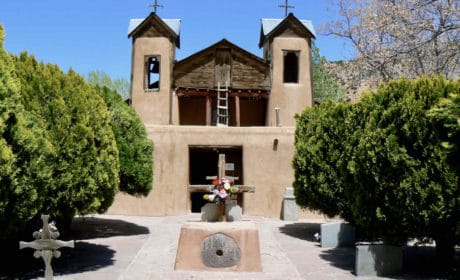Alan and I have long talked about an Outer Banks lighthouses road trip. The idea of slowly traveling along the North Carolina Coast while visiting and photographing historical lighthouses is our kind of boomer travel fun. In this article, you’ll learn the best route and which lighthouses to include in this fun North Carolina lighthouse road trip itinerary.
Southern writer and photographer, James Richardson, and his wife, enjoyed a fall Outer Banks lighthouse tour. He shares their itinerary as well as facts and history of his favorite lighthouses in North Carolina. And his lighthouse photos will definitely inspire your road trip.
We are blessed to live in a country with such diverse terrain and attractions. One of our freedoms is the ability to travel across the USA and see all those great places.
My bride of 54 years and I enjoy traveling and have for many years. One of our favorite places is the Outer Banks of North Carolina and its lighthouses. So come with us for an Outer Banks lighthouse tour on a fun, North Carolina road trip.
We recently re-visited the Outer Banks (abbreviated OBX) for the third time. We traveled in mid-October because there are less crowds, milder weather, and still most all the attractions and restaurants are open. And, of course, the lighthouses are “open.”
There are four accessible lighthouses on the Outer Banks: Currituck, Cape Hatteras, Bodie Island, and Ocracoke, and Cape Lookout Lighthouse is somewhat accessible. Join me as I share the fun of a North Carolina lighthouse road trip.
Table of Contents
How to identify lighthouses
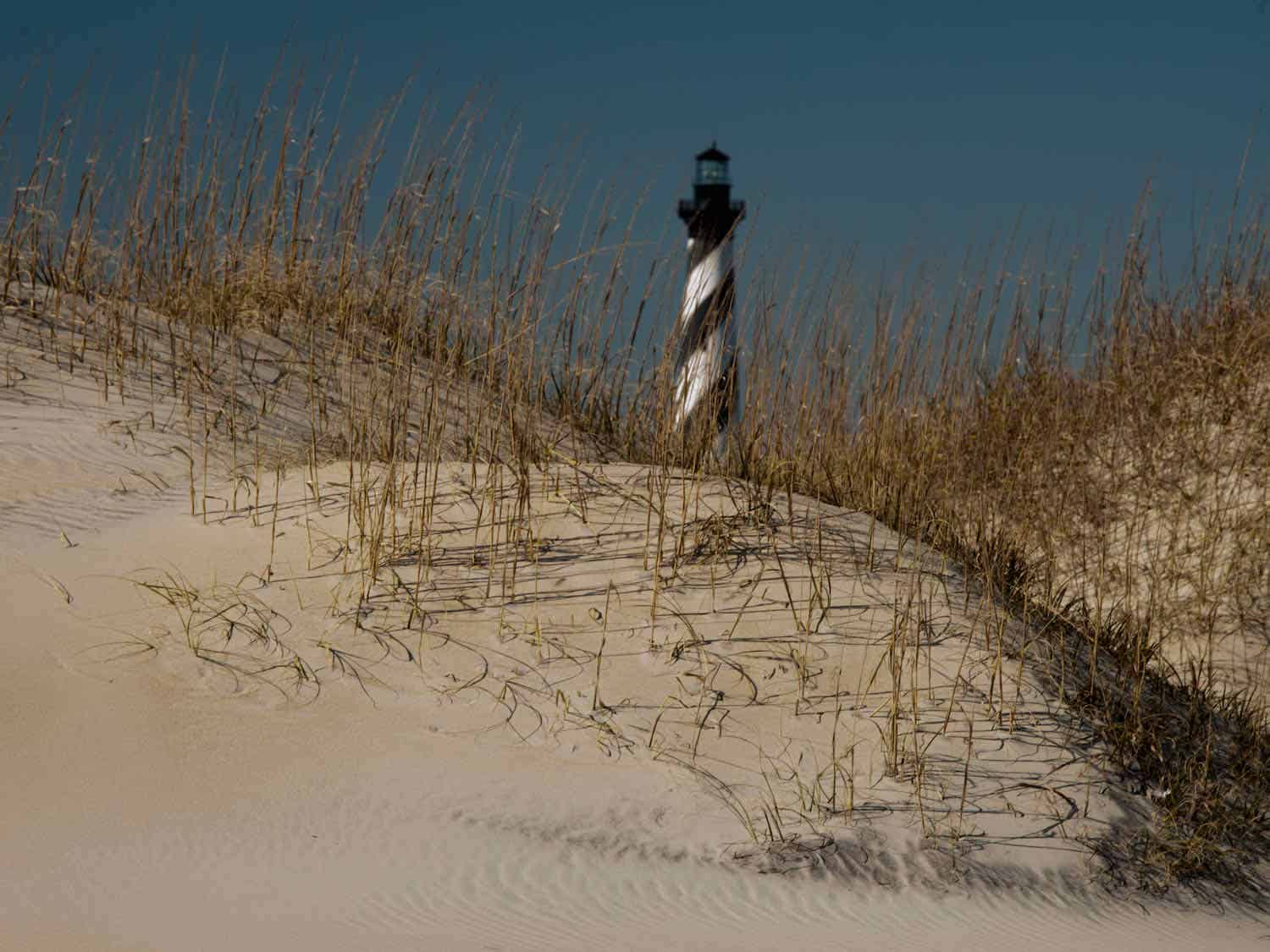
There are more than one thousand lighthouses protecting ships and shores in the United States. Some are classic lighthouses, some are light towers, range lights, and pier lights.
Each type has a particular function. Around 1900 every lighthouse in the U.S. was assigned a distinctive color pattern. There are day marks and night marks.
The pattern of stripes horizontally or diagonally is the day mark. A sequence of colors is the night mark. The colors are white, black and red. This helps mariners to recognize the specific lighthouses.
Directions to the North Carolina Outer Banks Lighthouses
The Outer Banks is a 200-mile long string of narrow barrier islands off the coast of North Carolina and a small portion of Virginia, They cover most of the North Carolina coastline, separating the sounds of Currituck, Albemarle, Roanoke, and Pamlico from the Atlantic Ocean.
There are three options for getting to the OBX. You’ll be traveling from the north, east, or the south.
Northern route
The northern route enters via US 158 from the Norfolk, Virginia area crossing the Currituck Sound. This might be a better way to get to the first lighthouse of this road trip, Currituck Beach Lighthouse.
Eastern route
The eastern route via US 64 comes through Manteo and arrives just south of Nags Head (one of the OBX towns with colorful names).
Southern route
If arriving from the south, the route requires a ferry ride from either Cedar Island or Swan Quarter ferry ports on the mainland of North Carolina. US 70 gets to the Cedar Island ferry port through Morehead City. US 264 takes travelers to the Swan Quarter port.
Reservations are recommended for these ferries. Here’s the 2025 schedule. This itinerary is also nearer the fifth lighthouse, Cape Lookout, which is on the southern end of the OBX.
Boomer Travel Tip
Use our road trip planner to make the most of your next road trip adventure.
Outer Banks Lighthouses road trip itinerary
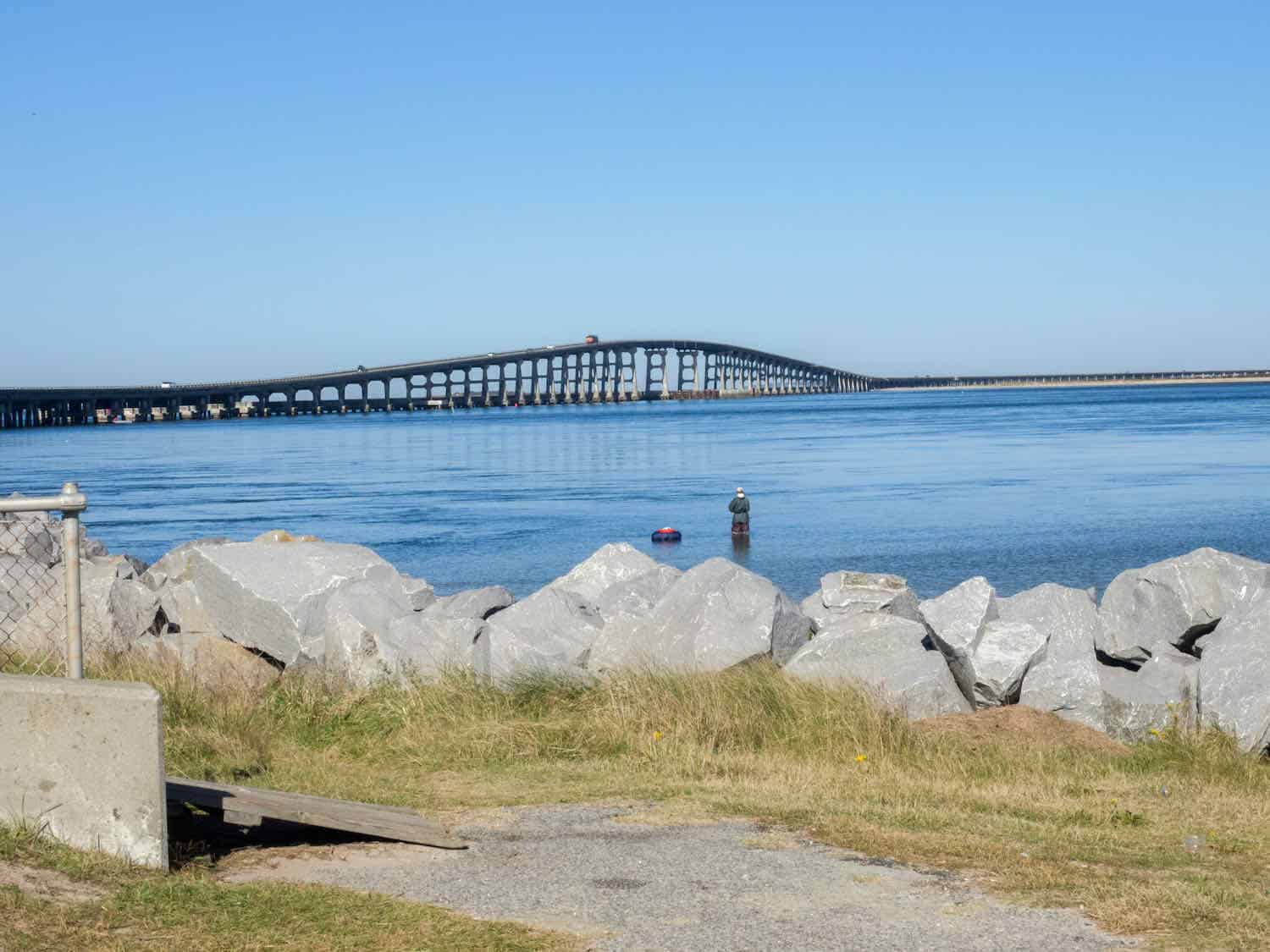
We chose the eastern route to the Outer Banks through Manteo on Roanoke Island because my wife and I arrive from Tennessee and transverse the entire state of North Carolina. Plus Roanoke Island has a lot to offer historically.
Roanoke Island for history and more
Our decision to stop at many of the other attractions made sense because there is so much to offer on the OBX. For instance, the North Carolina Aquarium, Fort Raleigh, Elizabethan Gardens, the Lost Colony, and the Elizabeth II are all attractions on Roanoke Island.
After a visit to some of the spots, we crossed Roanoke Sound to arrive on the Outer Banks near Nags Head. From here, your North Carolina lighthouses road trip travels State Route 12 along the entire length of the barrier islands.
Nags Head to see the Wright Brothers and tall sand dunes
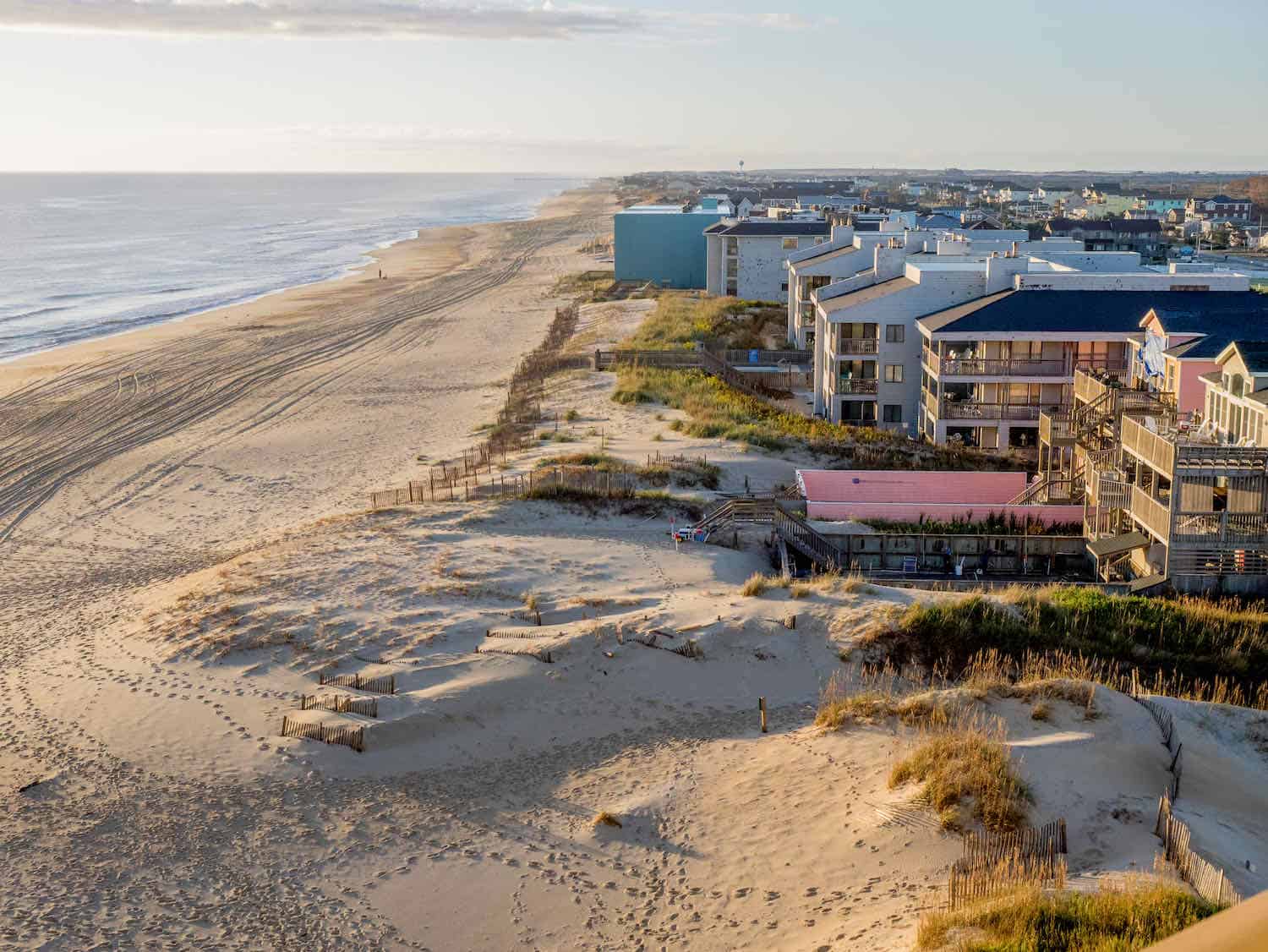
We made two stops on our way to the first lighthouse. North of Nags Head along SR 12 we visited the Wright Brothers National Memorial and Jockey’s Ridge State Park.
Wright Brothers National Memorial
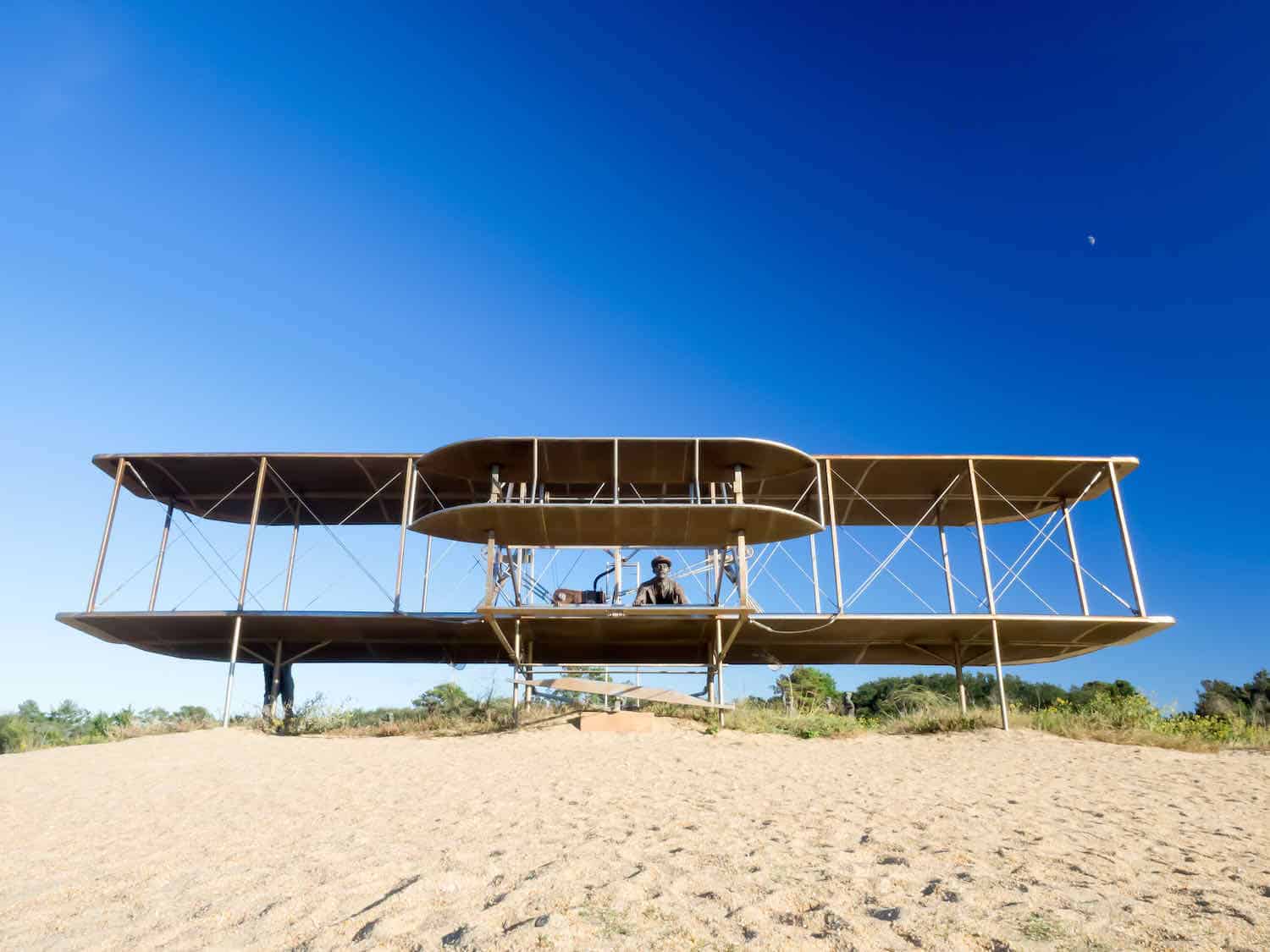
The importance of our fist stop is obvious. This is the exact location of the first flight of the Wright Brothers, Orville and Wilbur.
The brothers actually completed four flights, although the first three lasted maybe fifteen seconds and covered a distance of 200 feet or less. The first on December 17, 1903, covered 120 feet in twelve seconds. However, the fourth flight of 852 feet remained airborne for 59 seconds.
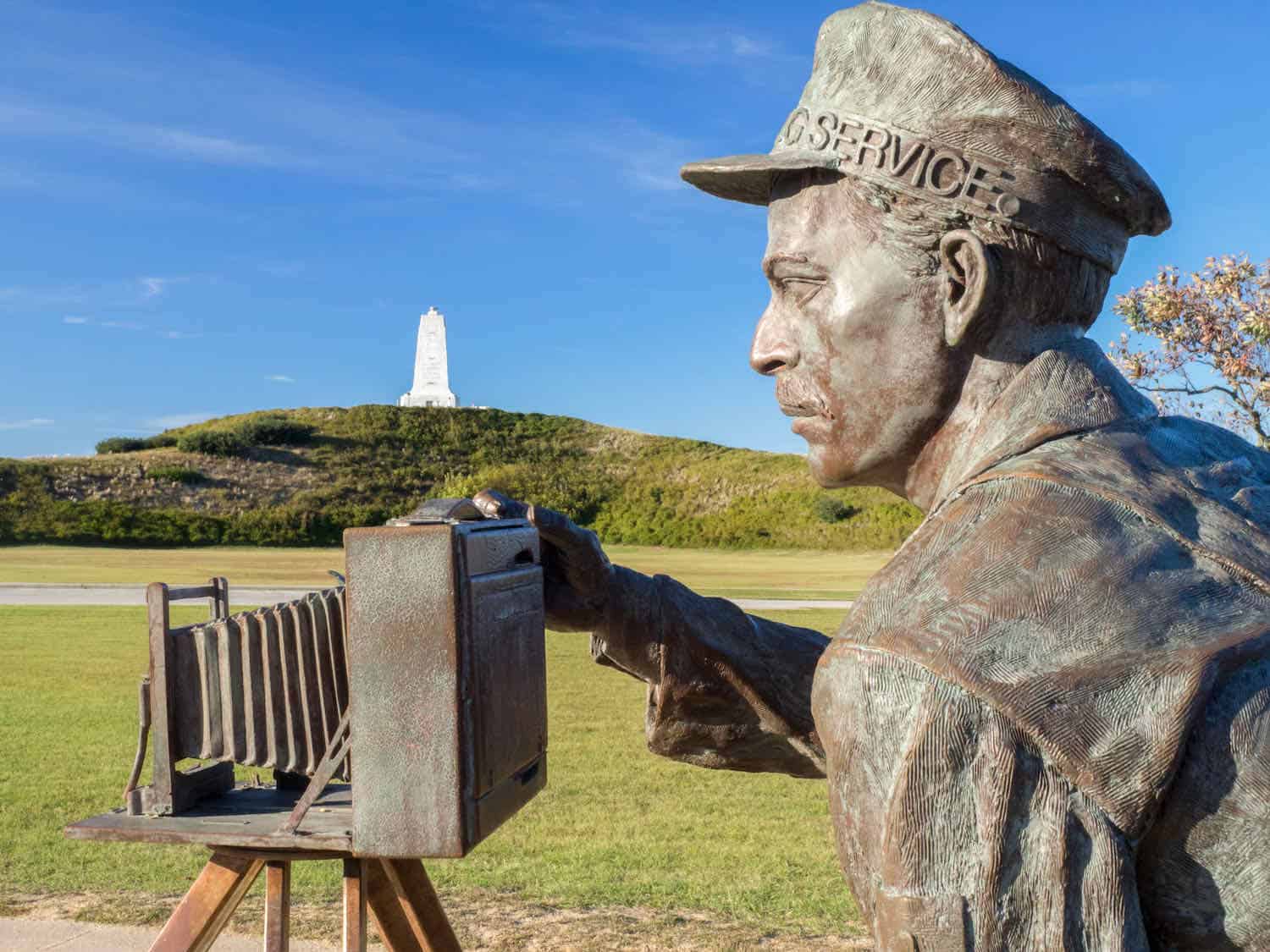
Located in Kitty Hawk, the Memorial consists of a visitor center with exhibits and a full scale reproduction of the Wright Brothers planes. You’ll also find markers denoting the location of the four flights, a reconstructed hangar and workshop, and a sculpture recreating the 1903 flight.
Atop Kill Devil Hills, is a very prominent sixty-foot monument honoring the Wright Brothers and their accomplishments. Incidentally, an America the Beautiful national park pass is honored at the Memorial.
Jockey’s Ridge State Park
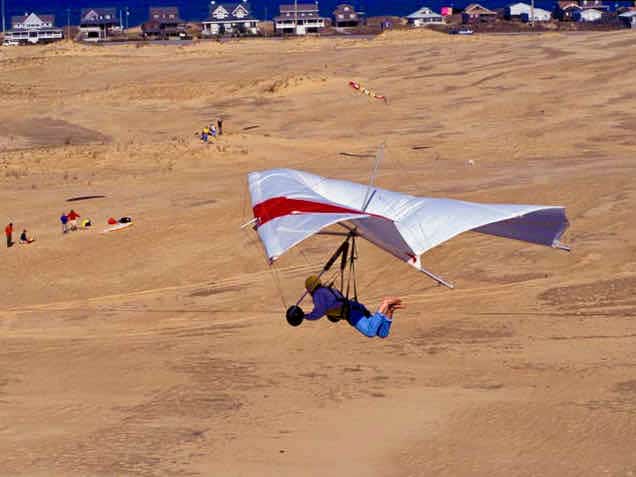
Our second stop was Jockey’s Ridge State Park. The significance of this state park is not so obvious. It is also located in Nags Head and its claim to fame: it contains the tallest sand dunes on the Atlantic coast.
For the same reasons the Wright Brothers chose Kitty Hawk for their attempts, many kiters and hang gliders choose Jockey’s Ridge and its dunes for their adventures — the high dunes, great winds, and soft sand landings.
Kite-flying is also very popular for visitors to Jockey’s Ridge. We watched some larger kites take in enough wind to pull the kiters along the sandy dunes.
This was a way to practice for kite surfing (water surfing using a special board and a four string kite). In addition, the view from the 140-foot dunes offers a panorama of Nags Head and the coastline.
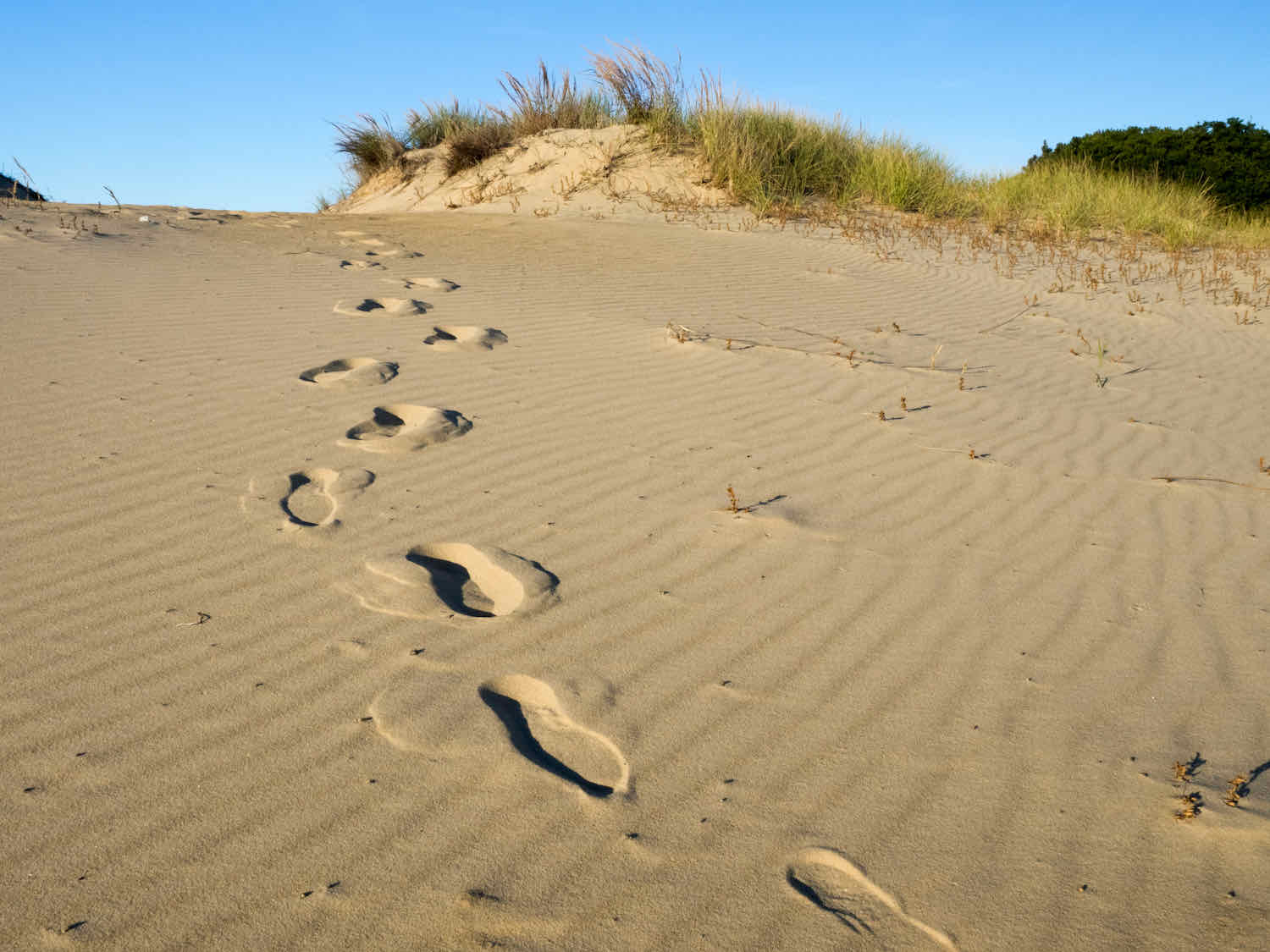
Not only do kites dot the sky over Jockey’s Ridge State Park, but hang gliders also take advantage of the high dunes and great wind. An unusual sight along the coast, hang gliders are usually spotted at higher elevations. But the conditions along the OBX make hang gliding another popular activity.
There is even a hang gliding school at Jockey’s Ridge operated by Kitty Hawk Kites. We did not bring a kite, and certainly did not sign up for hang gliding.
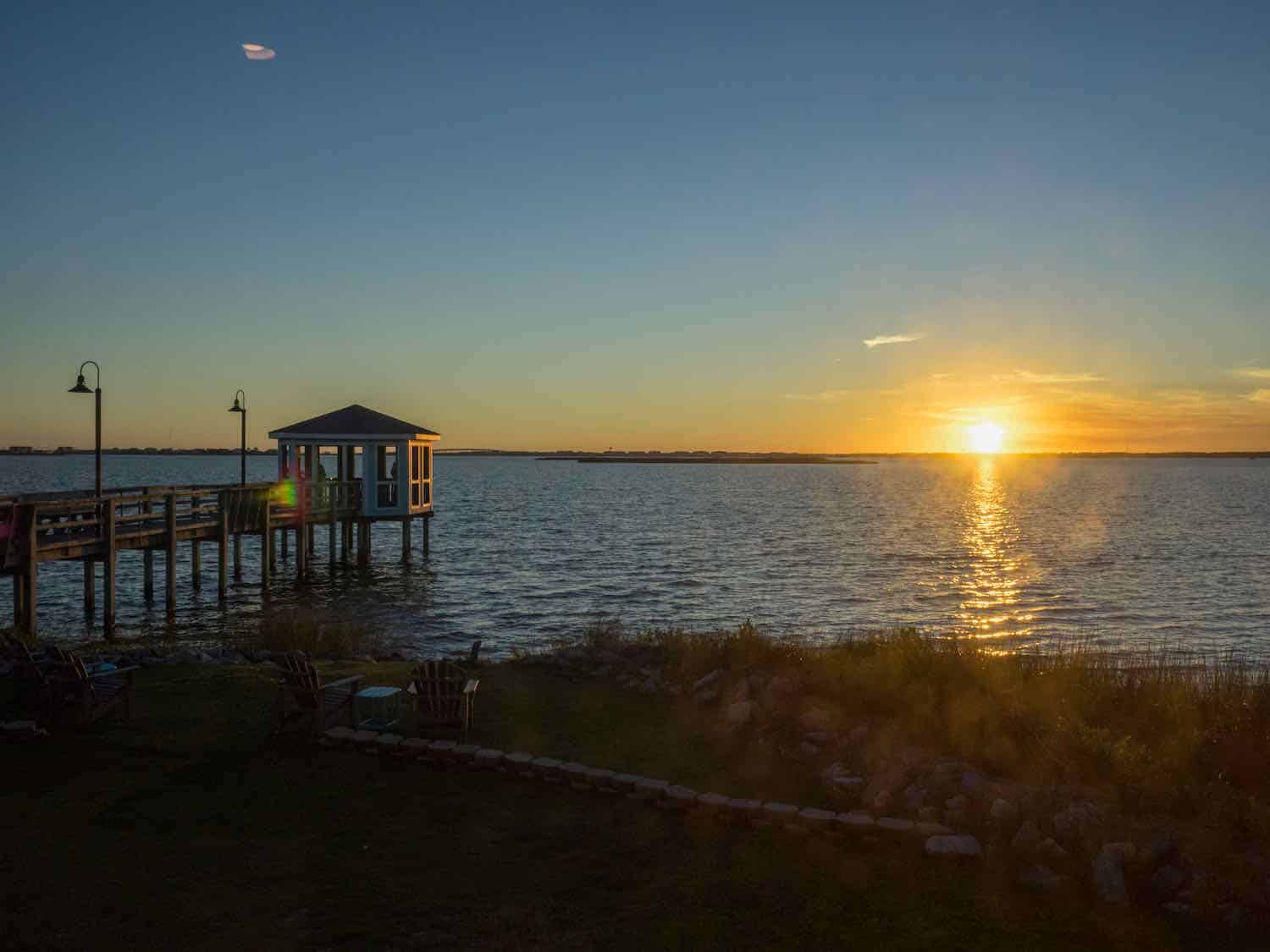
Corrolla and the Currituck Beach Lighthouse
After these first two stops, we picked up SR 12 and headed north toward Corrolla and our first Outer Banks lighthouse: the Currituck Beach Lighthouse that is 162 feet tall and has 220 steps.
How do we know that? We checked the website. My wife and I usually climb to the top of every lighthouse we visit that allows climbing, but this was an exception.
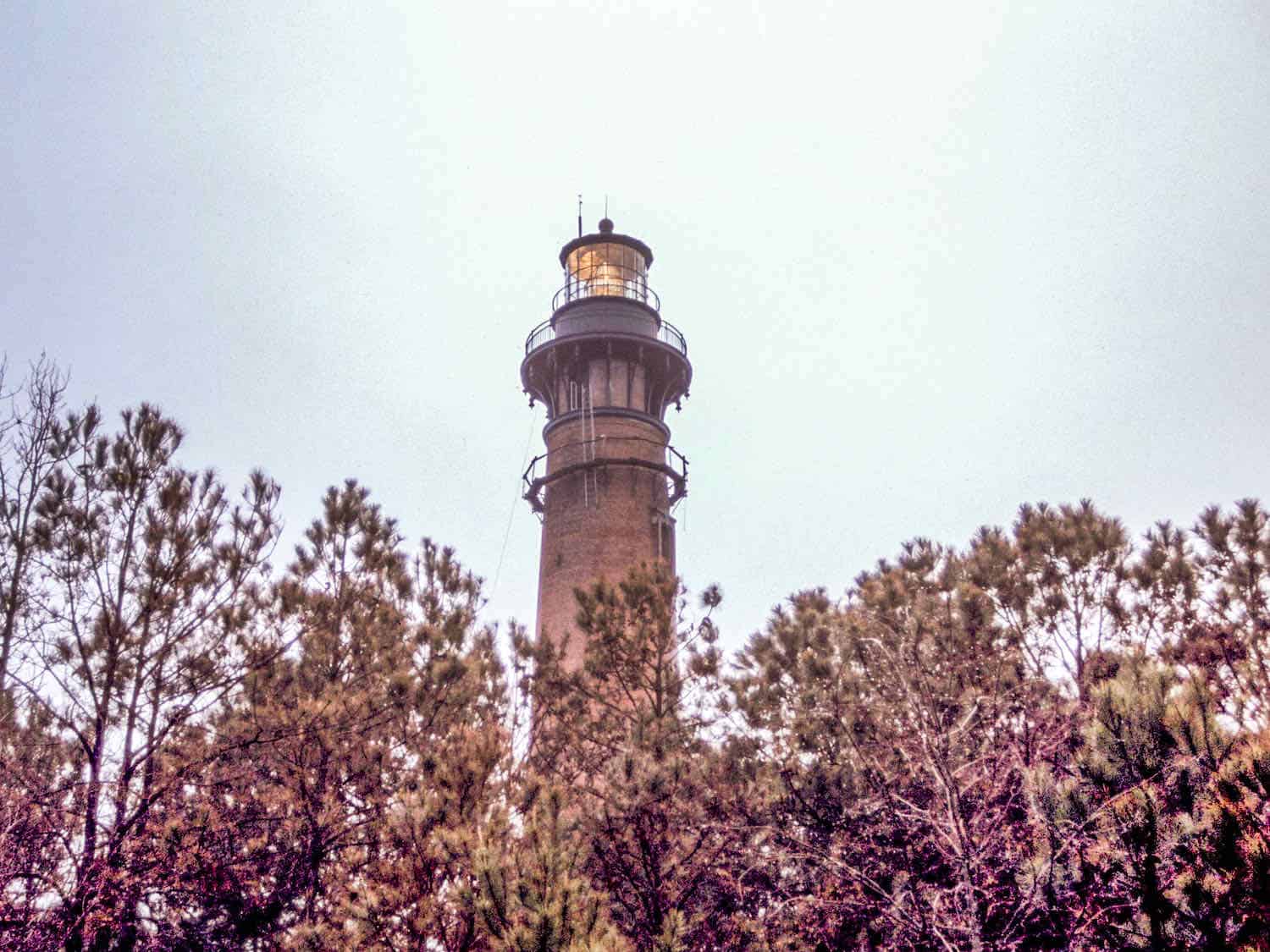
An interesting fact about Corrola and Currituck Beach is that wild horses freely roam the beaches and there are actually wild horse tours. However, we did not take one of the tours because during our visit, we saw plenty of wild horses on our own.
The SR 12 two-lane paved road is easily navigated except when high water occasionally covers the road. During storms or extremely high tides, there are temporary road closures.
The N.C Highway Department is very efficient in maintaining the roads and keeping them open. Check for current road conditions here.
Boomer Travel Tip
Need to update your road trip gear? Start with our recommendations for best road trip gear.
Bodie Island Light Station
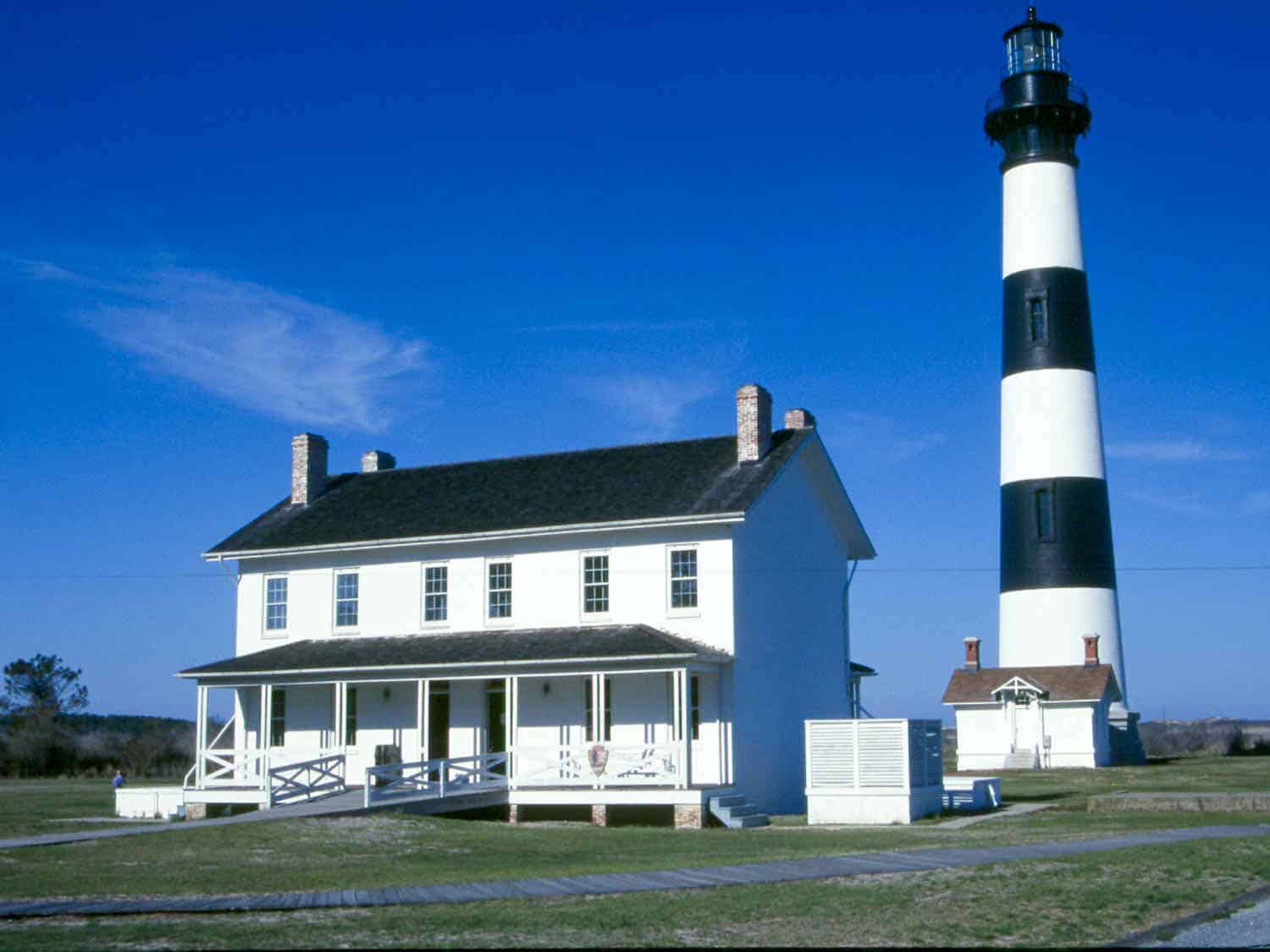
From Currituck we headed south again past Nags Head and along the Cape Hatteras National Seashore and through Pea Island National Wildlife Refuge. The first stop out of Nags Head was the Bodie Island Light Station.
According to the Outer Banks Lighthouse Society, the current lighthouse is the third to be built near the present site. The first was a 54-foot tower that started leaning after two years of service.
The second, also according to the Lighthouse Society, was 90 feet tall but was blown up by the Confederates in 1861.
The present tower was built just to the north and went into service in 1872.
Rodanthe and the Chicamacomico Life-saving Station
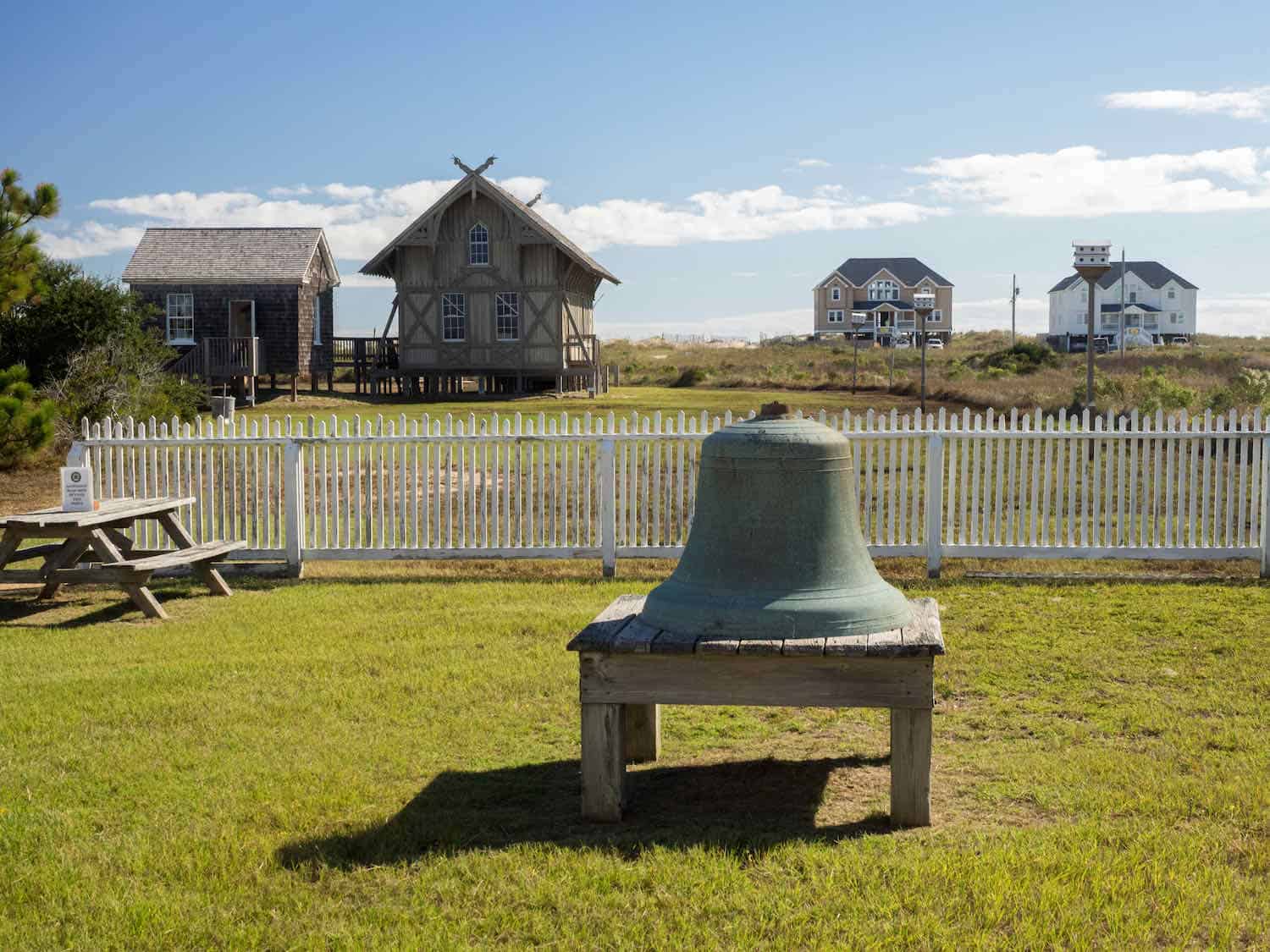
Farther south of the Bodie Island Light Station, we crossed the impressive Oregon Inlet bridge to Hatteras Island and arrived in the town of Rodanthe to visit the Chicamacomico Life-saving Station. This North Carolina lighthouse commemorates the valiant efforts and the service of the little-known surfmen who braved the rough waters of the Atlantic.
Since 1848, brave souls rescued crew members of sinking ships along the stretch of waters known as the “Graveyard of the Atlantic.” Because of newer navigational aids, electronics, and helicopters, the need for such stations was reduced. The Chicamacomico was decommissioned in 1952.
Cape Hatteras Light Station
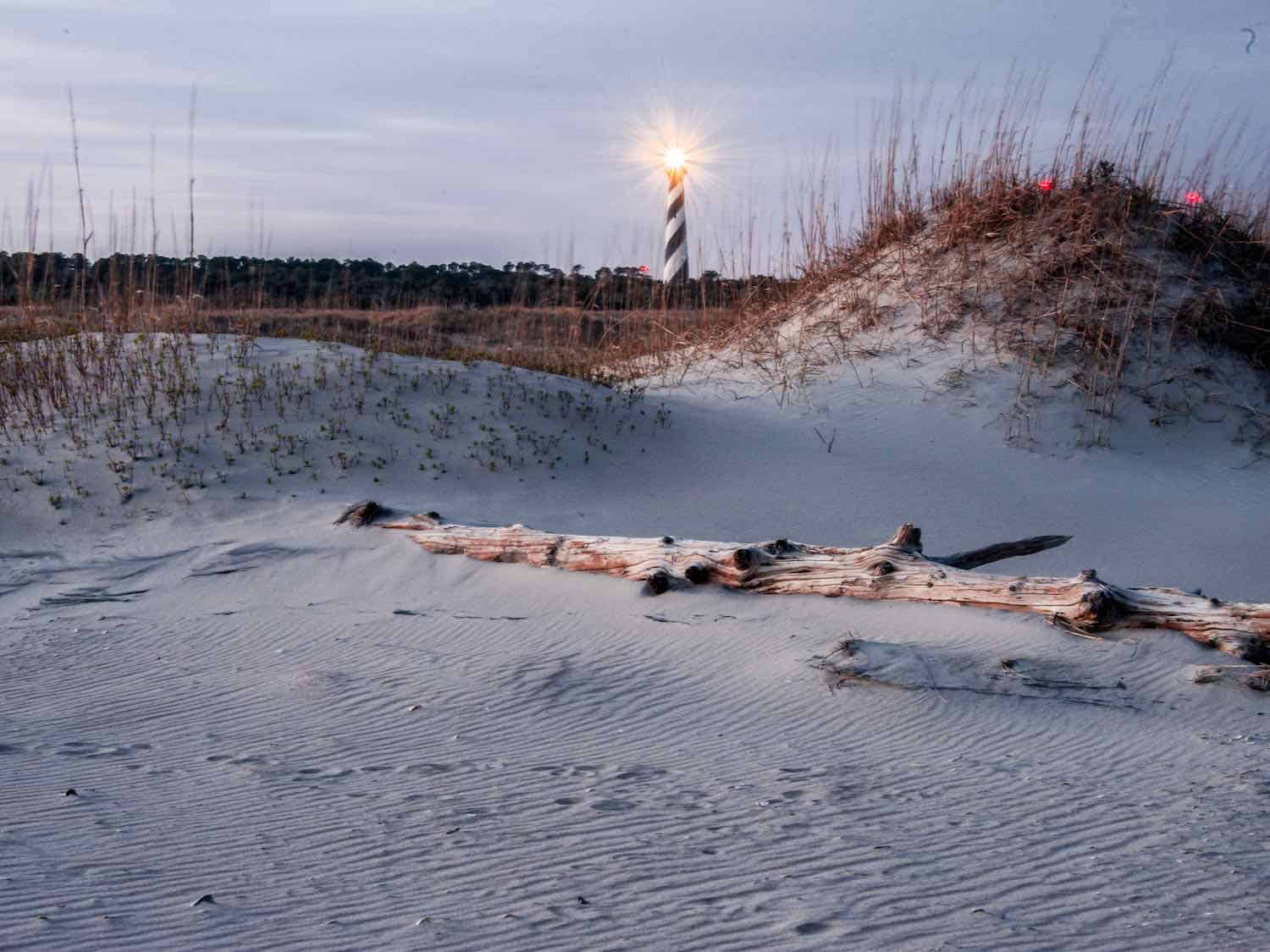
The notable Cape Hatteras Light Station was our next stop. It’s the tallest brick lighthouse in the USA. The day mark of its black and white spiral stripes is a familiar sight.
This lighthouse had to be moved from near the coastline to a safer location 2900 feet inland a few years ago. Information about this lighthouse is available at the National Park Service (here).
Both the Cape Hatteras and the Bodie Island Light Stations are open for self-guided climbs seasonally, usually the third Friday in April through Columbus Day. The third lighthouse, the Ocracoke Light Station, is not open for climbing and the Cape Lookout Lighthouse is currently closed for remodeling.
Ocracoke Island: Ocracoke Light Station and Cape Lookout Lighthouse

Getting to the Ocracoke Light Station and the Cape Lookout Lighthouse require ferry rides. The ferry from Hatteras to Ocracoke does not require reservations but arriving early at the dock is a good idea.
The Graveyard of the Atlantic Museum near the ferry dock to Ocracoke is a good place to visit while waiting on the Ocracoke ferry, which runs every half hour to one hour. Schedules are here.
Ocracoke Island is a quiet, slow-paced village with plenty of shopping, restaurants, and water-related activities. The Ocracoke Light Station is one of the most visited spots on the island and has very little parking to view the lighthouse. But getting around Ocracoke is best done by bringing or renting a bicycle or the ever present golf carts.

The 75-foot Ocracoke Island Lighthouse is solid white for its day mark and according to the NPS website, is the second oldest operating lighthouse in the nation. We spent one night on Ocracoke before heading off the island the next morning. There are several nice hotels on the island but we stayed at the Ocracoke Harbor Inn.
Cape Lookout Lighthouse
To get to Cape Lookout Lighthouse, choose from the few ferries that will take visitors there. This website has routes and carriers to the island.
Visitors will probably decide not to take their vehicle to this barrier island due to the lack of services. There are also no paved roads, concession stands, bathhouses, camp stores, or trash cans in the national seashore.
Except for the ferry landing areas, the islands are undeveloped and wild. But there is still the lighthouse. We opted not to visit this lighthouse since we like paved roads, concession stands, and bathrooms.
Heading home from Ocracoke
The village of Ocracoke surrounds Silver Lake, where the ferries to Swan Quarter and Cedar Island depart. We had reservations for a 7:30 a.m. ferry to Cedar Island, which took us to the mainland through Morehead City along US 70.
It is suggested ticketed passengers arrive at the ferry thirty minutes early. Boarding all the ferries is a very efficient operation and the ferries provide a pleasant and comfortable ride.
If you follow our lighthouse road trip, you’ll discover that the Outer Banks of North Carolina is one of America’s beautiful spots especially for lighthouse fans. Who knows, after you take our Outer Banks lighthouses tour, it might become one of your favorites also. It is ours.
The complete Outer Banks Lighthouses List
- Currituck Beach Lighthouse
- Bodie Island Lighthouse
- Cape Hatteras Lighthouse
- Cape Lookout Lighthouse
- Ocracoke Lighthouse
- Roanoke Marshes Lighthouse



